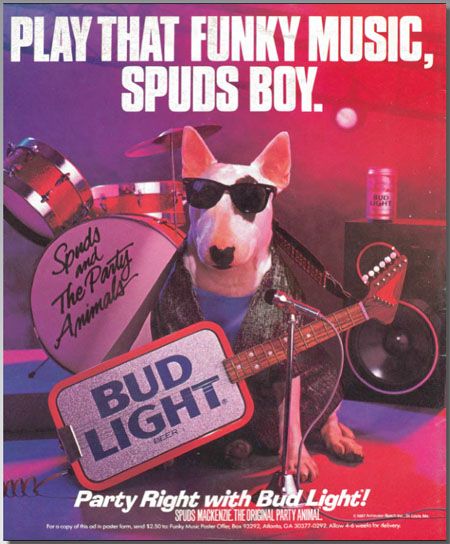
This is the third entry in a new recurring feature in which Believer Commercials Correspondent Ian Dreiblatt travels back in time via YouTube.com to review and examine the cultural phenomenon that was Television Commercials. Commercials featured here will mostly be old, and have, in many cases, already left an indelible mark on America and its culture. Read the first entry here, and the second entry here.
Let’s talk about the Spuds Factor. And let’s begin with the artist Chris Burden.
By the mid-seventies, Chris Burden had already completed many of the performances for which he remains best-known. For “Shoot,” he’d had a friend shoot him in the left arm. In “Trans-fixed,” he’d been crucified onto the hood of a Volkswagen Beetle, its engine revving like an anguished Christ. He’d been kicked down a stairway at Basel and had slithered in his underpants over broken glass. Invited by curator Phyllis Lutjeans to tape a TV interview, he’d pulled out a knife, threatened to kill her, and demanded the taping be broadcast live. This work could be called “sacramental,” in that it reenacts the holy forces that constitute American life—violence, car culture, the transmutation of fear and grief into spectacle—using Burden’s body as a bridge to the civilizational dream-space of art.
In 1975, Burden expanded his sacramental palette farther still, in a series of TV commercials he shot and aired in LA and New York. Picture this. You’re at home, cruising through some TV show—hey, maybe it’s “Maude”!—when you soar over a familiar precipice into the sweet, intermediary air of a commercial break. You see the usual sights: newlyweds enjoying their conjugal ketchup at last, Mel Brooks’s advice not to write with prunes, contest of the breakfast ghouls.
Suddenly, Chris Burden appears, whisps of scruff framing his cervine face. Locking eyes with the camera, he speaks three sentences, each one flashing on screen as a block of text: “Science has failed.” “Heat is life.” “Time kills.” This sequence, ten seconds in length, repeats twice more before you’re back to more familiar scenes: the straight-faced proclamation of Rich Flavor Chunks, speakerphone as hi-tech solution for the bedfast, the automotive equivalent of a game of badminton. And then, blessedly once more, there’s “Maude.”
As Allen Ginsberg once wrote, this actually happened. Herds of Angelinos flooded their local affiliates with bewildered calls, and Burden later reported getting recognized at the laundromat, but the stunt garnered little other response (not even one free beer, as Ginsberg also once wrote). The text in fact consisted of sentences he’d seen graffitied on his building.
The piece was called “Poem for LA,”...
You have reached your article limit
Sign up for a digital subscription and continue reading all new issues, plus our entire archives, for just $1.50/month.
Already a subscriber? Sign in




